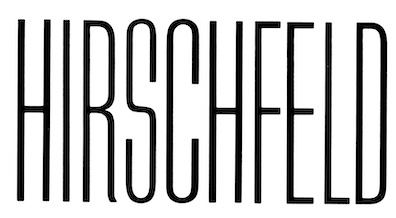FAQs
For your convenience, our most common customer questions are answered right here.
Not finding what you want? Reach out directly through our Contact Us page.
Q: What is the Al Hirschfeld Foundation?
A: Since 2004, the Al Hirschfeld Foundation has been fulfilling its mission to promote interest in the performing and visual arts and education by supporting a wide range of not-for-profit institutions. By utilizing Hirschfeld’s nine decades of art to help build audiences, increase revenue, and provide a rally point for arts organizations, the Al Hirschfeld Foundation has had a significant impact around the country whether it be San Francisco, New Orleans, or New York through exhibitions, educational programs, and grants.
In 2008, the Al Hirschfeld Foundation partnered with the New York City Board of Education to create a landmark curriculum based on Hirschfeld’s art for grades K though 12. In addition to teaching students about the history of 20th century performing arts, whether it be theater, film, dance, music, or television, the curriculum teaches students about observation, prioritization, and visualization across a spectrum of disciplines. The success of the program has resulted in teachers outside of the New York City area interested in bringing this unique educational tool to their classrooms.
The Foundation maintains an extensive collection of Hirschfeld artworks and lends pieces to institutions all over the world. Papers from the first half-century of Hirschfeld’s career are held by the Archives of American Art at the Smithsonian Institution in Washington, D.C., while the New York Public Library of the Performing Arts also holds a significant collection as well. The Harvard Theatre Collection holds the largest public collection of Hirschfeld art and ephemera. There are also significant collections of Hirschfeld art at the Library of Congress, the National Portrait Gallery, Academy of Motion Picture Arts and Sciences, and The Paley Center for Media.
Q: What are artist’s proofs?
A: In any Hirschfeld limited edition of prints, a small number of additional prints (frequently 10% of the edition size, for example an edition of 100 may have 10 artist proofs) were marked “artist’s proof” (A/P) and were kept by Hirschfeld. Over the years, it was these artist’s proofs that Hirschfeld would loan to exhibitions, or give or sell to museums, patrons and friends. Because the number of artist’s proofs from any edition are small, they are highly collectible, and can appreciate as much, if not faster, than prints in the regular edition.
Q: How will the work be shipped?
A: It will be shipped flat via a carrier such as FedEx or UPS, signature required.
Q: Do I have to sign for fine art packages?
A: Yes, we sent out all fine art packages via signature required. If you waive a signature for your package, the Al Hirschfeld Foundation is NOT responsible for any lost or stolen packages.
Q: How do I know the work is authentic?
A: All the artwork sold here came directly from Al Hirschfeld’s studio and is now in the Al Hirschfeld Foundation’s collection. The non-profit Foundation was established by the artist’s will. For its first twelve years, its president was the artist’s widow, Louise Kerz Hirschfeld. Each artwork sold here is accompanied by a certificate of authenticity issued by the Al Hirschfeld Foundation.
Q: Is there any way to get to Hirschfeld prints that are not seen here?
A: While we don’t have every print Hirschfeld ever produced, we will be happy to direct you to either the print’s original publisher or other gallery who might still have the requested print when possible. We cannot guarantee you we will be able to find the print for you.
Q: Will these prints appreciate in value?
A: It is the nature of a limited edition print to increase in value as the edition is sold. If history is any indication, all of these prints have appreciated in value since their publication and continue to increase in value. Because of the unique nature of artist’s proofs and their scarcity, artist’s proof appreciate as much, if not faster, than prints from their regular edition.
Q: What if I have a print to sell?
A: At this time the Al Hirschfeld Foundation does not purchase any Hirschfeld artwork for its collection, nor does it sell any prints on consignment.

